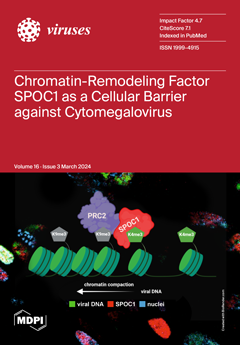The GI-19 lineage of infectious bronchitis virus (IBV) has emerged as one of the most impactful, particularly in the “Old World”. Originating in China several decades ago, it has consistently spread and evolved, often forming independent clades in various areas and countries, each
[...] Read more.
The GI-19 lineage of infectious bronchitis virus (IBV) has emerged as one of the most impactful, particularly in the “Old World”. Originating in China several decades ago, it has consistently spread and evolved, often forming independent clades in various areas and countries, each with distinct production systems and control strategies. This study leverages this scenario to explore how different environments may influence virus evolution. Through the analysis of the complete S1 sequence, four datasets were identified, comprising strains of monophyletic clades circulating in different continents or countries (e.g., Asia vs. Europe and China vs. Thailand), indicative of single introduction events and independent evolution. The population dynamics and evolutionary rate variation over time, as well as the presence and intensity of selective pressures, were estimated and compared across these datasets. Since the lineage origin (approximately in the mid-20th century), a more persistent and stable viral population was estimated in Asia and China, while in Europe and Thailand, a sharp increase following the introduction (i.e., 2005 and 2007, respectively) of GI-19 was observed, succeeded by a rapid decline. Although a greater number of sites on the S1 subunit were under diversifying selection in the Asian and Chinese datasets, more focused and stronger pressures were evident in both the European (positions 2, 52, 54, 222, and 379 and Thai (i.e., positions 10, 12, 32, 56, 62, 64, 65, 78, 95, 96, 119, 128, 140, 182, 292, 304, 320, and 323) strains, likely reflecting a more intense and uniform application of vaccines in these regions. This evidence, along with the analysis of control strategies implemented in different areas, suggests a strong link between effective, systematic vaccine implementation and infection control. However, while the overall evolutionary rate was estimated at approximately 10
−3 to 10
−4, a significant inverse correlation was found between viral population size and the rate of viral evolution over time. Therefore, despite the stronger selective pressure imposed by vaccination, effectively constraining the former through adequate control strategies can efficiently prevent viral evolution and the emergence of vaccine-escaping variants.
Full article






